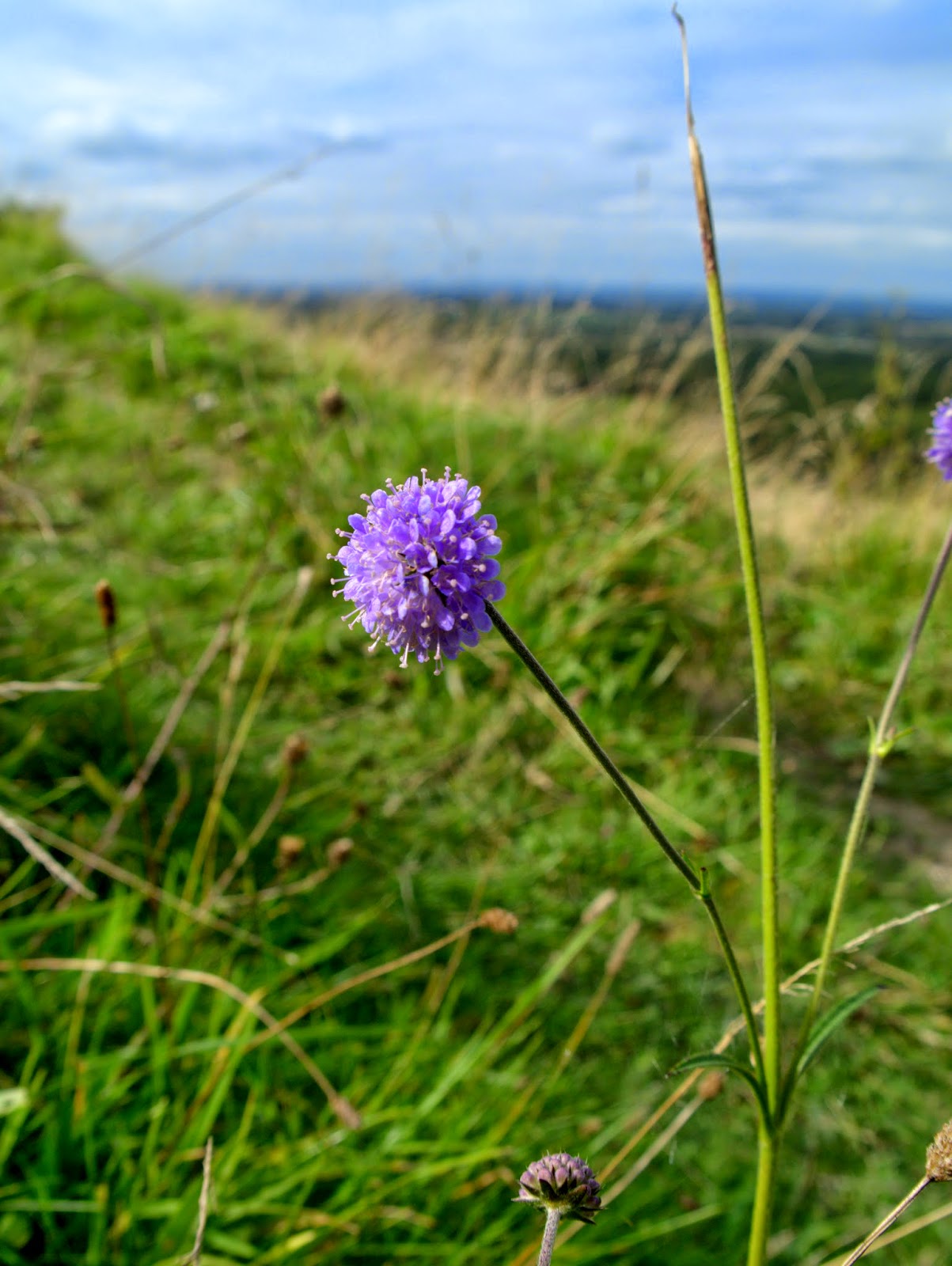
Our walk was only two miles with 380 feet of ascent and descent from the car park at Ranmore Common.
This field to the east of the car park had been well grazed by cattle.
Several tiny Brown Argus butterflies were flying around.
A battered Meadow Brown was seen.
This moth posed elegantly on a blackthorn twig.
Look at the sycamore trees in the background above. The cattle have eaten all the lower leaves within their reach showing how they limit the growth of such trees when they are small. This encourages me, having felled a tall sycamore on Wolstonbury hill yesterday (in a National Trust work party clearing scrub) the cattle should eat the leaves that will sprout from the remaining stump.
Common Rockrose flowers into September.
Traversing Steer's field and heading westwards past the beech wood rich with beech nuts...
... the downland here is resplendent with tiny yet exquisite Eyebright flowers. From a distance they appear white; close up -- quite different.
Harebells and Clustered Bellflowers were lovely too.
This blue butterfly was very cooperative, allowing my camera to get within a few inches away for this shot. It is worn out. How I wanted it to be an Adonis Blue. It may be but to me is too battered to confirm that and may be a Common Blue; any ideas anyone? Many of its scales are lost.
A pair of Meadow Browns were doing what they do on a warm, humid September afternoon and were mating.
In the corner of this meadow, right by the kissing gate, was a female Brown Hairstreak butterfly.
It flew into the meadow and looked as though it was crawling through the grass. The following shots were from some meters away and zoomed in.
It had settled in the grass alright but on a blackthorn bush.
It really looks as though it was laying eggs.
What a fabulous sight and what a joyous short walk in September.
Feeling very hot and sweaty and bitten by mosquitoes it was a cool relief to return along the North Downs Way though the woods.











